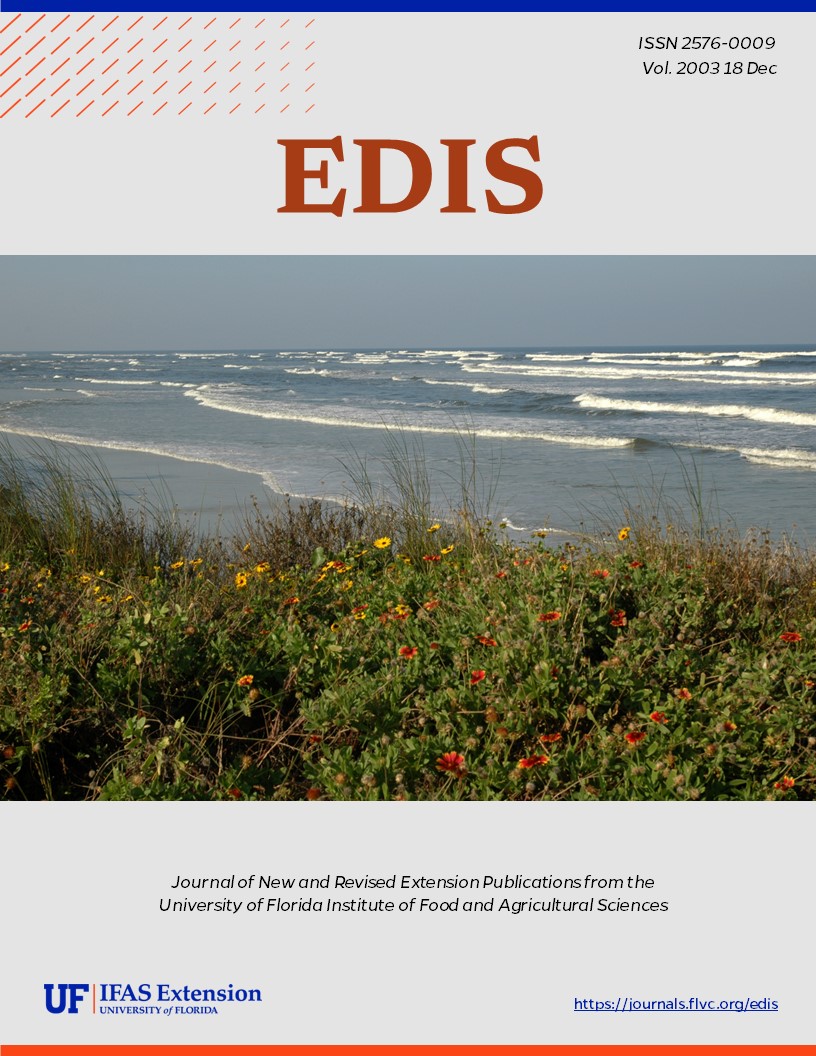Abstract
Melonworm, Diaphania hyalinata Linnaeus, occurs throughout most of Central and South America and the Caribbean. The United States is the northern limit of its permanent range, and wintertime occurrence generally is limited to south Florida and perhaps south Texas. Melonworm disperses northward annually. Its distribution during the summer months is principally the southeastern states, though occasionally it disperses north to New
England and the Great Lakes region. This document is EENY-163, one of a series of Featured Creatures from the Entomology and Nematology Department, Florida Cooperative Extension Service, Institute of Food and Agricultural Sciences, University of Florida. Published: October 2000.
EENY163/IN320: Melonworm, Diaphania hyalinata Linnaeus (Insecta: Lepidoptera: Crambidae) (ufl.edu)
References
Capinera, J.L. 1994. Pickleworm and melonworm. Pages 140-145 in D. Rosen, F.D. Bennett, and J.L. Capinera (eds.). Pest Management in the Subtropics: Biological Control -- A Florida Perspective. Intercept, Andover, United Kingdom.
Capinera, J.L. 2001. Handbook of Vegetable Pests. Academic Press, San Diego. 729 pp.
Kelsheimer, E.G. 1949. Control of insect pests of cucumber and squash. Florida Agricultural Experiment Station Bulletin 465. 15 pp.
Letourneau, D.K. 1986. Associational resistance in squash monocultures and polycultures in tropical Mexico. Environmental Entomologist 15:285-292. https://doi.org/10.1093/ee/15.2.285
Medina-Gaud, S., E. Abreu, F. Gallardo, and R.A. Franqui. 1989. Natural enemies of the melonworm, Diaphania hyalinata L. (Lepidoptera: Pyralidae) in Puerto Rico. J. Agric. Univ. Puerto Rico 73:313-320.
McSorley, R. and V.H. Waddill. 1982. Partitioning yield loss on yellow squash into nematode and insect components. Journal of Nematology 14:110-118.
Pena, J.E., V.H. Waddill, and K.D. Elsey. 1987a. Population dynamics of the pickleworm and the melonworm (Lepidoptera: Pyralidae) in Florida. Environmental Entomologist 16:1057-1061. https://doi.org/10.1093/ee/16.5.1057
Pena, J.E., V.H. Waddill, and K.D. Elsey. 1987b. Survey of native parasites of the pickleworm, Diaphania nitidalis Stoll, and melonworm, Diaphania hyalinata (L.) (Lepidoptera: Pyralidae), in southern and central Florida. Environmental Entomologist 16:1062-1066. https://doi.org/10.1093/ee/16.5.1062
Raina, A.K., J.A. Klun, M. Schwarz, A. Day, B.A. Leonhardt, and L.W. Douglass. 1986. Female sex pheromone of the melonworm, Diaphania hyalinata (Lepidoptera: Pyralidae), and analysis of male responses to pheromone in a flight tunnel. Journal of Chemical Ecology 12:229-237. https://doi.org/10.1007/BF01045606
Shannag, H.K. and J.L. Capinera. 1995. Evaluation of entomopathogenic nematode species for the control of melonworm (Lepidoptera: Pyralidae). Environmental Entomologist 24:143-148. https://doi.org/10.1093/ee/24.1.143
Smith, H.A., J.L. Capinera, J.E. Pena, and B. Linbo-Terhaar. 1994. Parasitism of pickleworm and melonworm (Lepidoptera: Pyralidae) by Cardiochiles diaphaniae (Hymenoptera: Braconidae). Environmental Entomologist 23:1283-1293. https://doi.org/10.1093/ee/23.5.1283
Smith, R.I. 1910. Insect enemies of cantaloupes, cucumbers and related plants. North Carolina Agricultural Experiment Station Bulletin 205. 40 pp.
Smith, R.I. 1911. Two important cantaloupe pests. North Carolina Agricultural Experiment Station Bulletin 214:101-146.
Valles, S.M., and J.L. Capinera. 1992. Periodicity of attraction of adult melonworm, Diaphania hyalinata. Florida Entomologist 75:390-392. https://doi.org/10.2307/3495863
Webb, S.E. and S.B. Linda. 1992. Evaluation of spunbounded polyethylene row covers as a method of excluding insects and viruses affecting fall-grown squash in Florida. Journal of Economic Entomology 85:2344-2352. https://doi.org/10.1093/jee/85.6.2344
Unless otherwise specified, articles published in the EDIS journal after January 1, 2024 are licensed under a Creative Commons Attribution-NonCommercial-NoDerivs 4.0 International (CC BY-NC-ND 4.0) license.

